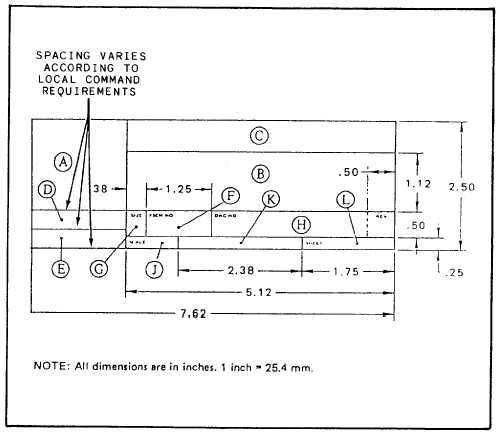lines) and the location of the horizontal
borderlines are marked off on the vertical trim
lines. Dimensions may be scaled along the
borderlines.
After the drawing is completed, borderlines
are given the required weight. After the completed
drawing has been removed from the board, it is
cut to its finished size along the trim line. If
blueprints are to be made on paper that is not
precut to the standard drawing size, you may find
it necessary to leave an extra margin outside the
trim lines. By leaving an extra margin, you can
darken the trim lines. The darkened trim lines,
when reproduced, will provide a visible line for
trimming the blueprints to size. The extra margin
will also help protect the drawing when it is
repeatedly handled or attached to the drawing
board later for revisions.
BASIC FORMAT
The following discussion deals with the basic
drafting format. By basic format, we mean the
title block, revision block, list of materials,
and other information that must be placed on
applicable size drafting sheets. Although you
may find slight variations on local-command-
prepared drawings, the basic format specified
in MIL-HDBK-1006/1 is required on all NAV-
FACENGCOM drawings.
Title Block
The primary purpose of a drawing title block
is to identify a drawing. Title blocks must be
uniform in size and easy to read. They may be
mechanically lettered, neatly lettered freehand, or
preprinted commercially on standard size drafting
sheets.
Generally, the title block is placed in the lower
right-hand corner of the drawing sheet, regardless
of the size of the drawing (except for vertical
title block). There are three sizes of title blocks:
a block used for A-, B-, C-, and G-size drawings
(fig. 3-15), a slightly larger block for D-, E-, F-,
H-, J-, and K-size drawings (fig. 3-16), and a
Figure 3-16.-Preparing title block for D-, E-, F-, H-, J-, and K-size drawings.
3-13


